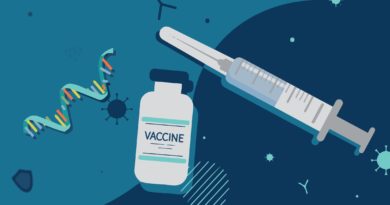Report: 25% of state residents skeptical of COVID | Health Care | wyomingnews.com

CASPER – A new national survey aims to answer not just whether people will accept a COVID-19 vaccine, but why they might not.
National health policy think tank the Surgo Foundation gathered more than 17,000 online survey responses from across the U.S., and then used a statistical model to estimate the proportion of different vaccine-hesitant populations in each state. Wyoming ranked near the top nationally for three of those populations.
The foundation report breaks survey respondents into five categories: the “Enthusiasts,” the “Watchful,” the “Cost-Anxious,” the “System Distrusters” and the “COVID Skeptics.”
It also accounts for how many people are already vaccinated.
About 25% of Wyomingites are considered “COVID Skeptics.” The Surgo Foundation describes these individuals as “People who don’t believe in vaccines in general, but the primary barrier is their deeply held beliefs around COVID-19. Every person in this group believes in at least one conspiracy theory.”
Wyoming reported the third-highest proportion of that group, behind Arkansas’ 30% and North Dakota’s 29%.
Enthusiasts are those eager to be vaccinated. Less than 1% of Wyomingites are considered “Enthusiasts,” though the survey also asks if a person is already vaccinated. When the survey was conducted in mid April, vaccines were widely available in Wyoming, meaning many would-be “Enthusiasts” had already gotten their shots.
The remaining personas fall in between, and according to the report authors, are the most susceptible to be swayed one way or the other.
“The Watchful” are described as those who want to “wait and see” how the vaccine rollout goes. They may be unsure about side effects or the effectiveness of a COVID-19 vaccine. About 13% of Wyomingites are estimated to fall into that category.
“The Cost-Anxious” are those for whom “time and financial cost are the primary barriers.”
While the vaccines are free regardless of a person’s insurance status, getting the shot does require at least 15 minutes of a person’s day. About 14% of the state is estimated to be in this category and “not having time” was the top barrier to getting vaccinated shared by Wyoming respondents.
Wyoming has fewer than 3% of “System Distrusters” or people who feel they are treated unfairly by the health care system because of their race.
Wyoming’s high rates of vaccine hesitancy aren’t new. Recent U.S. Census Bureau surveys suggest Wyoming’s communities are more hesitant toward vaccines than anywhere else in the U.S.
Members of the Surgo Foundation hope the report identifying the reasons for people’s reluctance will make it easier to change their minds.
“We will need to work in a much more precise way to close this vaccine uptake gap efficiently and effectively with limited time and resources,” the report’s executive summary reads. “How do we do it? By using a precision health approach that looks at specific vaccination barriers and beliefs at a geographically granular level.”
Surgo’s founder and CEO, Sema Sgaier, published a New York Times op-ed Tuesday sharing the research and promoting the approach.
“America’s vaccination strategy needs to change to address this, and it starts with understanding the specific reasons people have not been vaccinated yet,” she wrote in the column.
The report outlines strategies for reaching each different persona.
For the “Watchful,” it suggests sharing stories from those who have gotten a vaccine, rather than just providing data.
For the “Cost-Anxious,” the report suggests finding creative places to inoculate residents. It also suggests that businesses give employees paid leave to get their shot.
For the “Skeptics,” the report acknowledges they may not be easily swayed. It does recommend deputizing individuals trusted by those individuals to promote the vaccines.
Wyoming has fallen behind the rest of the nation in getting shots in arms. Roughly 30% of residents here are fully vaccinated. About 34% have had at least one shot.
Nationally, about 38% of the population is fully inoculated. Wyoming is in the bottom 10 nationally both for first shots and for those fully vaccinated.


